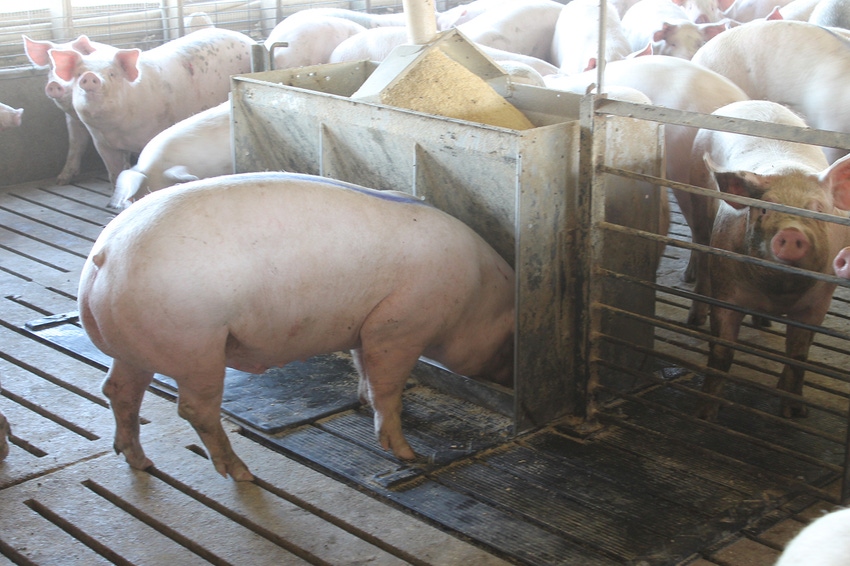Given the importance of energy density in summer diets and the high cost of ingredients, an accurate evaluation of the energy value of lipids become critical.
April 13, 2022

Many local ice cream shops reopened, showing that spring is here, and summer is near, but the hot and humid climate leads to a challenge in maintaining the optimal energy and nutrient intake of pigs. Hence, heat stress causes a decrease in the market weight of pigs and the overall revenue. Usually, pork producers observe impaired reproductive performance in breeding herds mated in summer, the slow growth rate in grow-finish pigs and unfavorable carcass quality due to fatness1.
Elevating dietary energy intake is one nutritional strategy that is typically paired with environmental and stocking density management. Indeed, energy is the most critical component of a diet because it is required for all physiological activities, including growth in market pigs and milk production in lactating sows. When pigs experience heat stress, feed intake decreases to limit heat production of digestion, and metabolism of nutrients. This leads to a decreased energy intake, which then impairs the performance of pigs and sows.
Therefore, specialized "summer diets" are often formulated to increase energy density while lowering the heat increment. Because the caloric efficiency of lipids is greater than starch, fiber and protein, supplementing fats and oils in summer diets is an effective strategy. However, increasing dietary fats/oils this summer is controversial because the prices of lipid sources as of April are extremely higher than the prices on a five-year average, which were below $0.36 and $0.27 per pound of crude soybean oil and choice white grease. Given the importance of energy density in summer diets and the high cost of ingredients, an accurate evaluation of the energy value of lipids become critical.
Sources of lipids, such as degummed soybean oil are traded based on specifications such as unsaponifiable matter, MIU (moisture, volatile matter, insoluble impurities), flash point and phosphorus. Except for free fatty acids and insoluble impurities, trade-based specifications provide little information about the energy value of the sources of lipids. Ideally, producers get what they pay for, but this may not be true for various sources of lipids because the energy value of a lipid source varies substantially (net energy of soybean oil = 2,071 to 3,692 kcal/lb)3. Hence, the cost per unit of energy could be largely different.
A more accurate approach to value sources of lipids is to establish standards that relate to the energy value and a few energy prediction equations are available for lipids fed to pigs (Table 1)3. While these equations represent an advancement in the prediction of the energy value of lipids, the accuracy of using these equations to predict energy values is a concern when comparing in-vivo determined energy values.
The predicted digestible energy content of corn oil can be 1,144 kcal/kg more than the actual DE content determined in pigs4. Moreover, the predicted DE content of soybean oil is lower than the actual DE content of soybean oil up to 1,210 kcal/kg, depending on which prediction equation was used5. These suggest that research efforts are needed to increase the accuracy of prediction equations on the energy value of lipids.
Multiple factors, including the fatty acid composition, the digestibility, post-absorption fate of the lipids (i.e., generation of ATP, fat deposition or milk production), and age of pigs explain the difference in energy value among sources of lipids. The composition of lipid sources varies because the proportion of triglycerides, free fatty acids and non-triglyceride sterols vary among sources of lipids. The energy value of triglycerides is greater than that of free fatty acids because free fatty acids tend to be less digestible. In addition, the digestibility of polyunsaturated fatty acids is greater than the digestibility of saturated fatty acids.
More importantly, it is often overlooked that the energy value of a lipid source also depends on the metabolic fate of the lipids. The efficiency of utilization of energy from lipids towards lipid deposition is greater than that for lean muscle accretion. Consequently, the efficiency of dietary energy from lipids in finishing pigs would be greater than that for nursery pigs. Few energy evaluation systems take into consideration these differences.
In conclusion, a multifactorial approach must be developed to identify a best-fit equation for predicting the energy value of fats and oils that takes into account the factors that affect the energy value of the ingredients and the productive efficiency of using the additional nutrients.
References:
1Liu et al., 2021; doi : https://doi.org/10.1016/j.animal.2021.100349
2Kerr et al., 2003; doi : https://doi.org/10.2527/2003.8181998x
3Shurson et al., 2021; doi : https://doi.org/10.3390/ani11051259
4Kellner and Patience, 2017; doi: https://doi.org/10.2527/jas.2017.1824
5Kerr et al., 2019; doi: https://doi.org/10.15232/aas.2018-01835
Source: Yuan-Tai Hung and Pedro Urriola, who are solely responsible for the information provided, and wholly own the information. Informa Business Media and all its subsidiaries are not responsible for any of the content contained in this information asset.
You May Also Like



